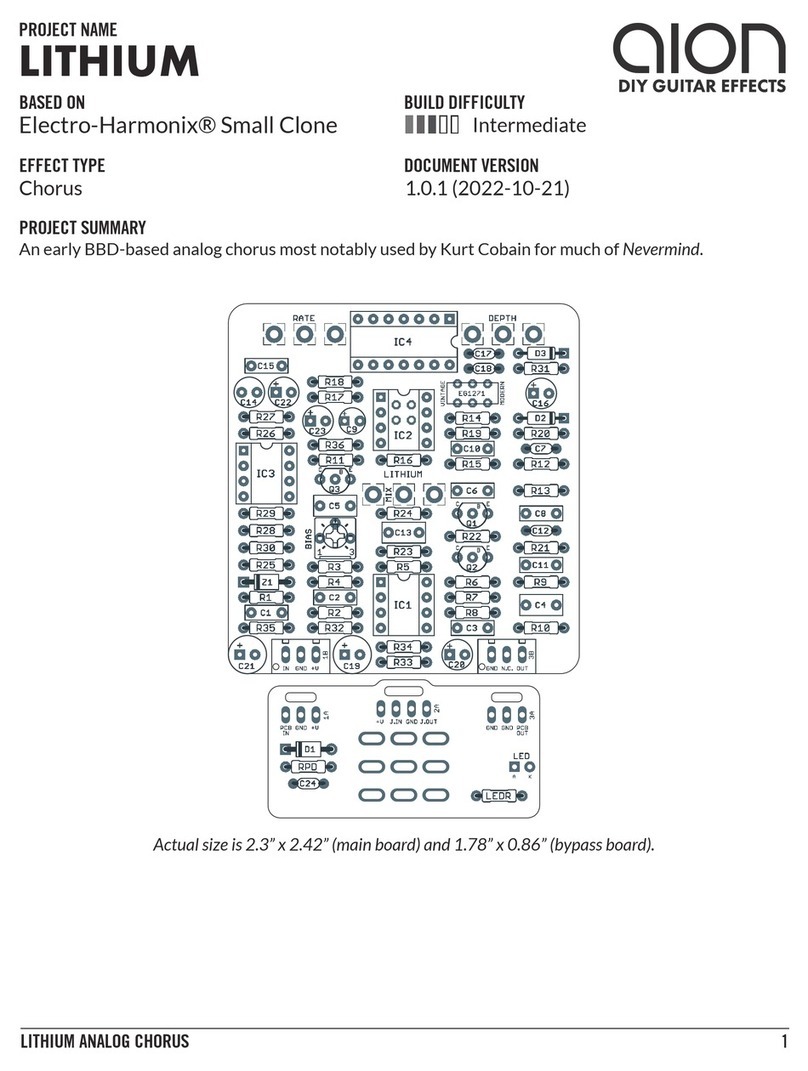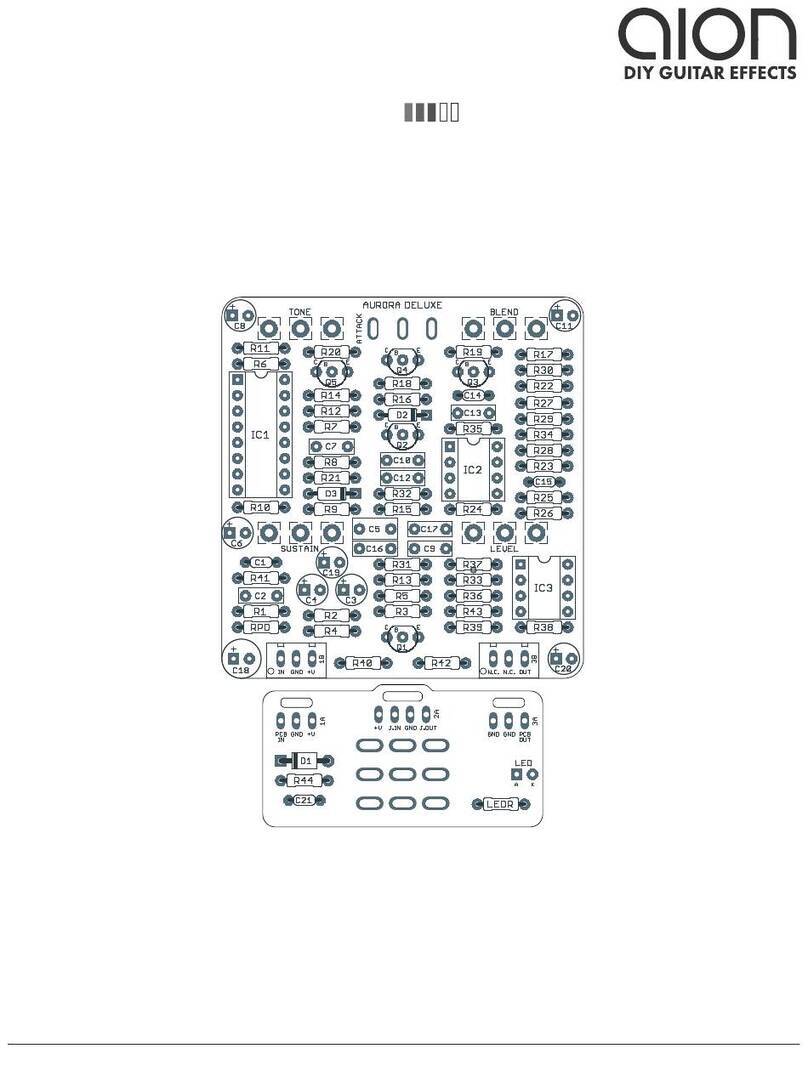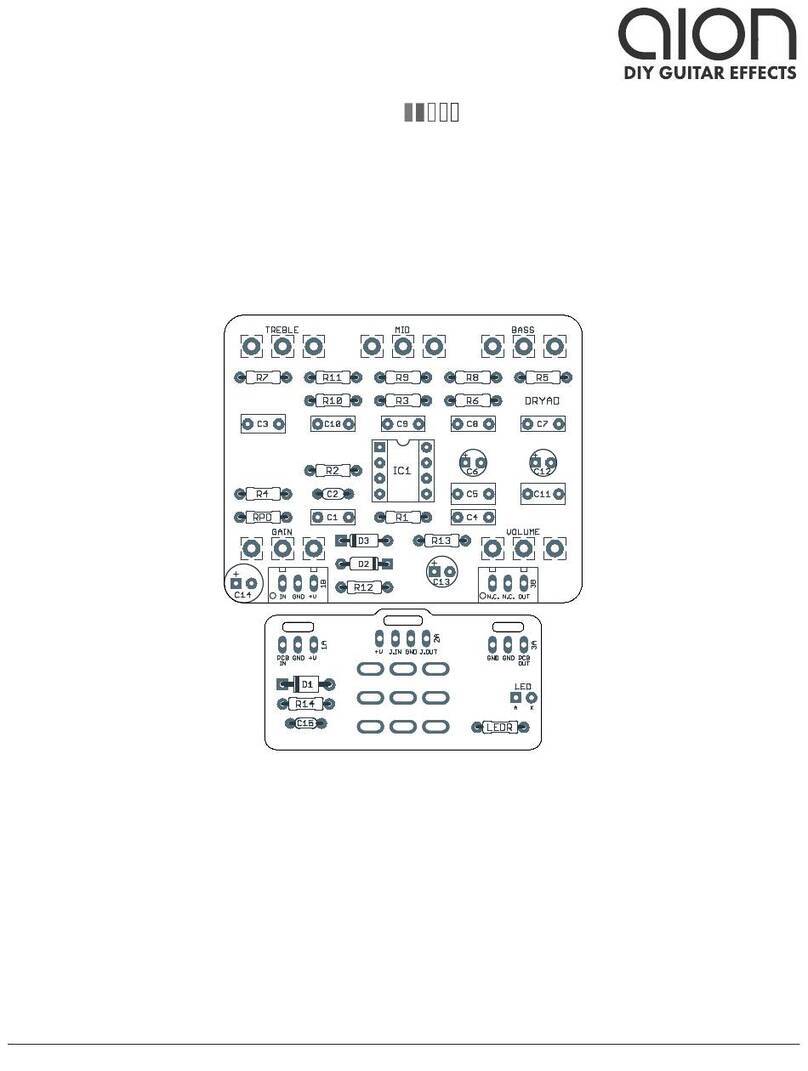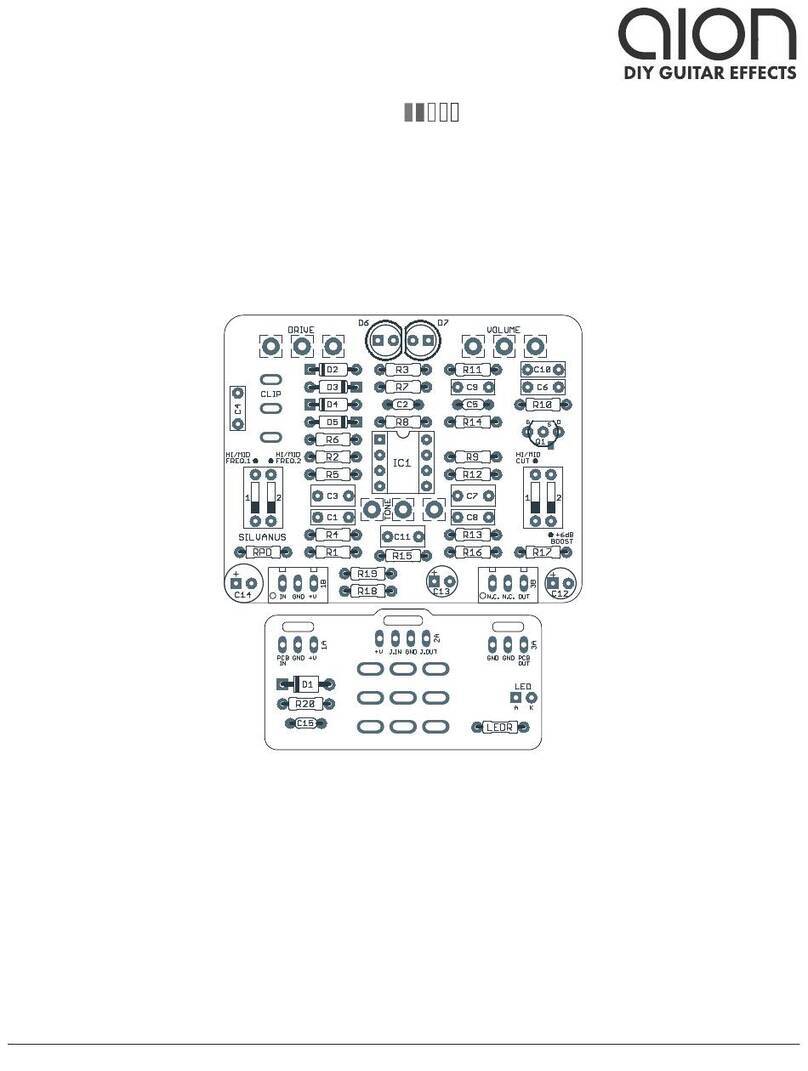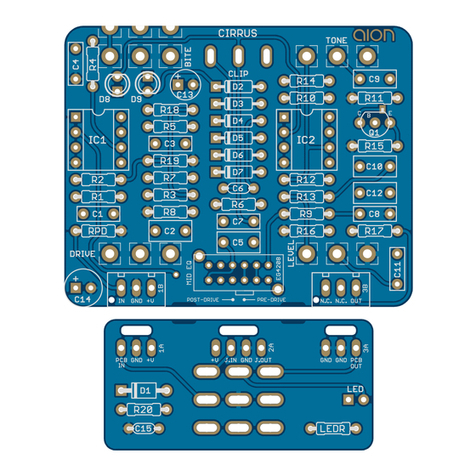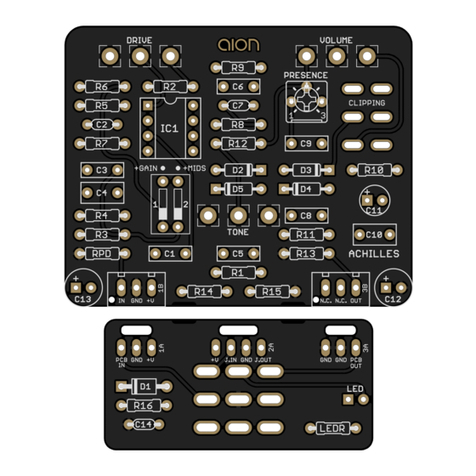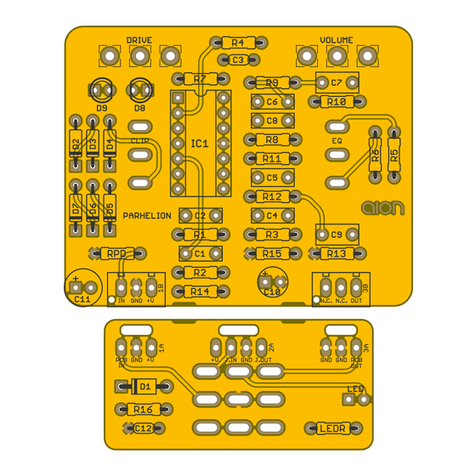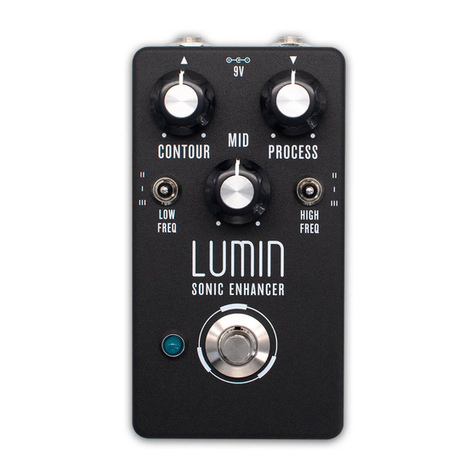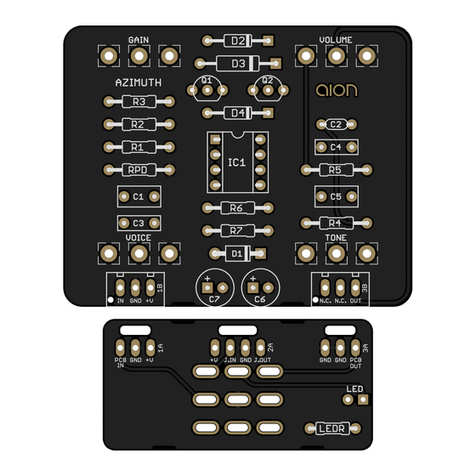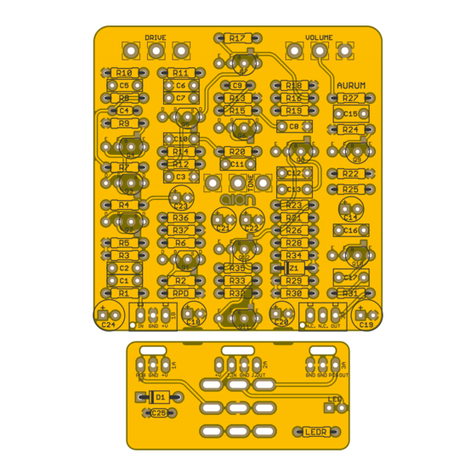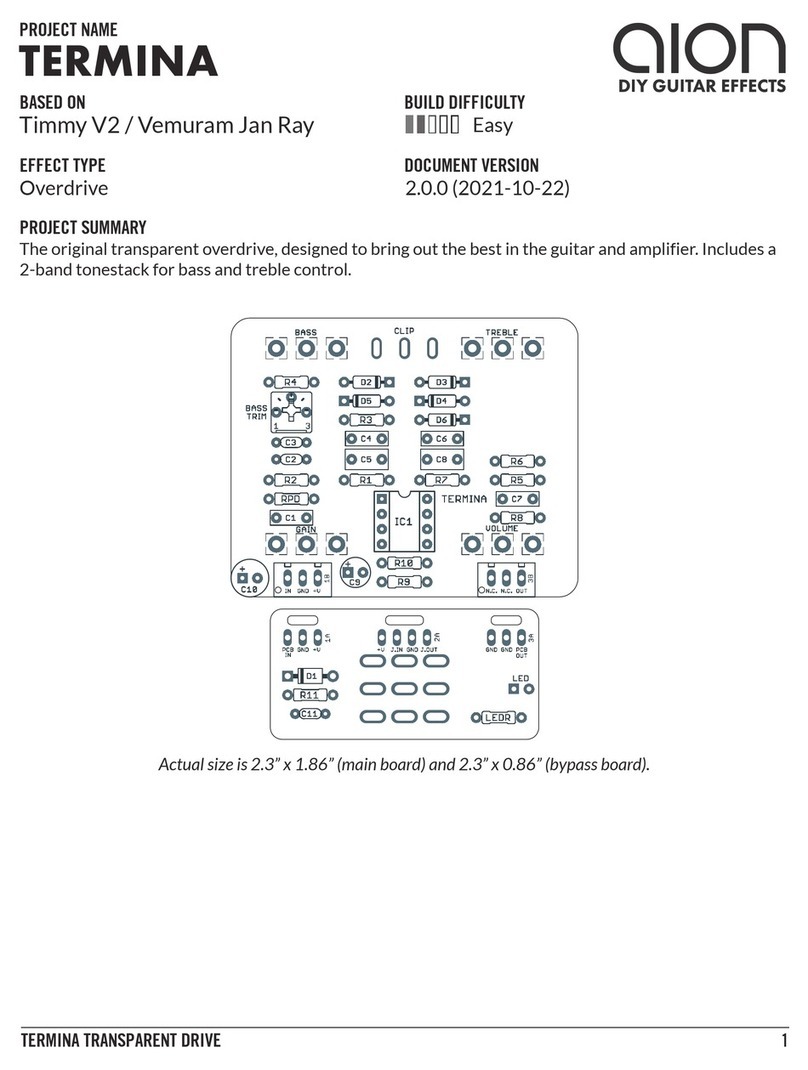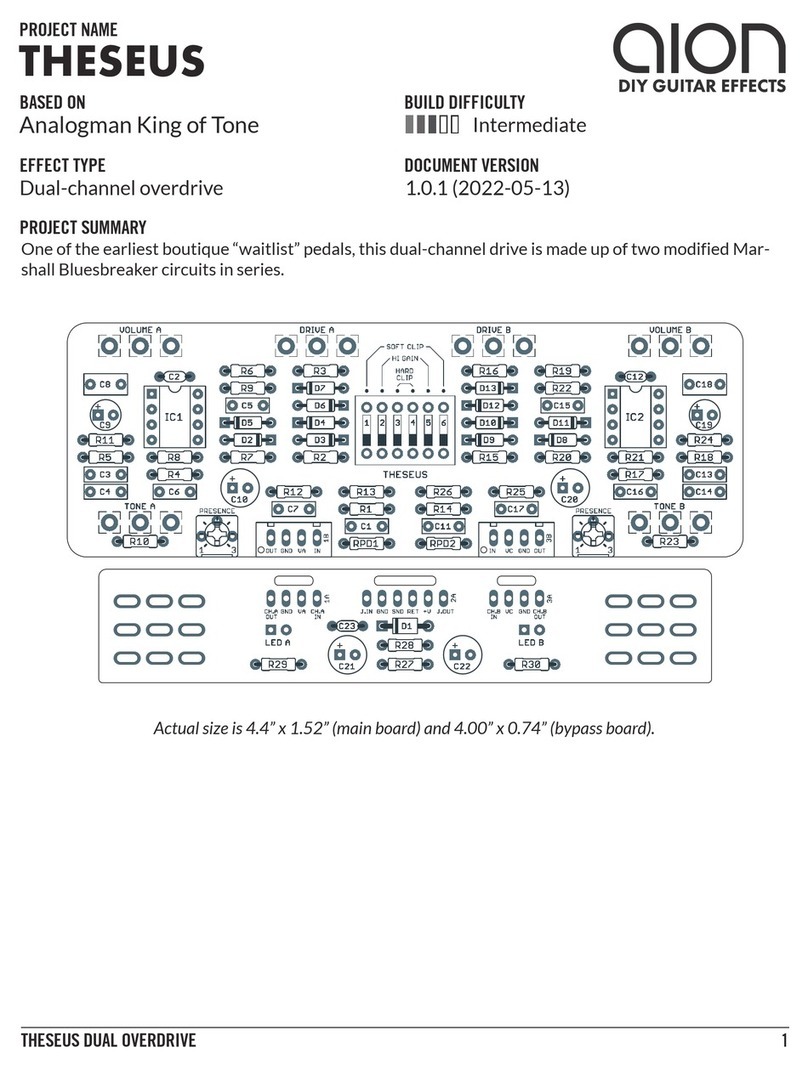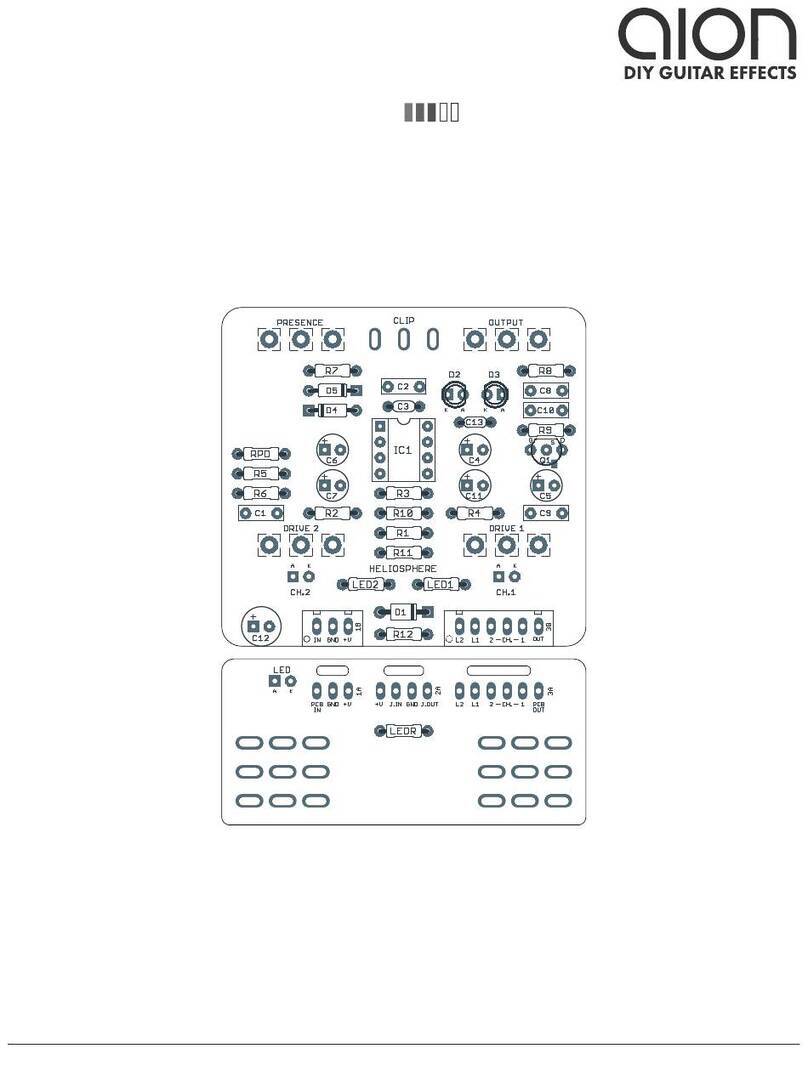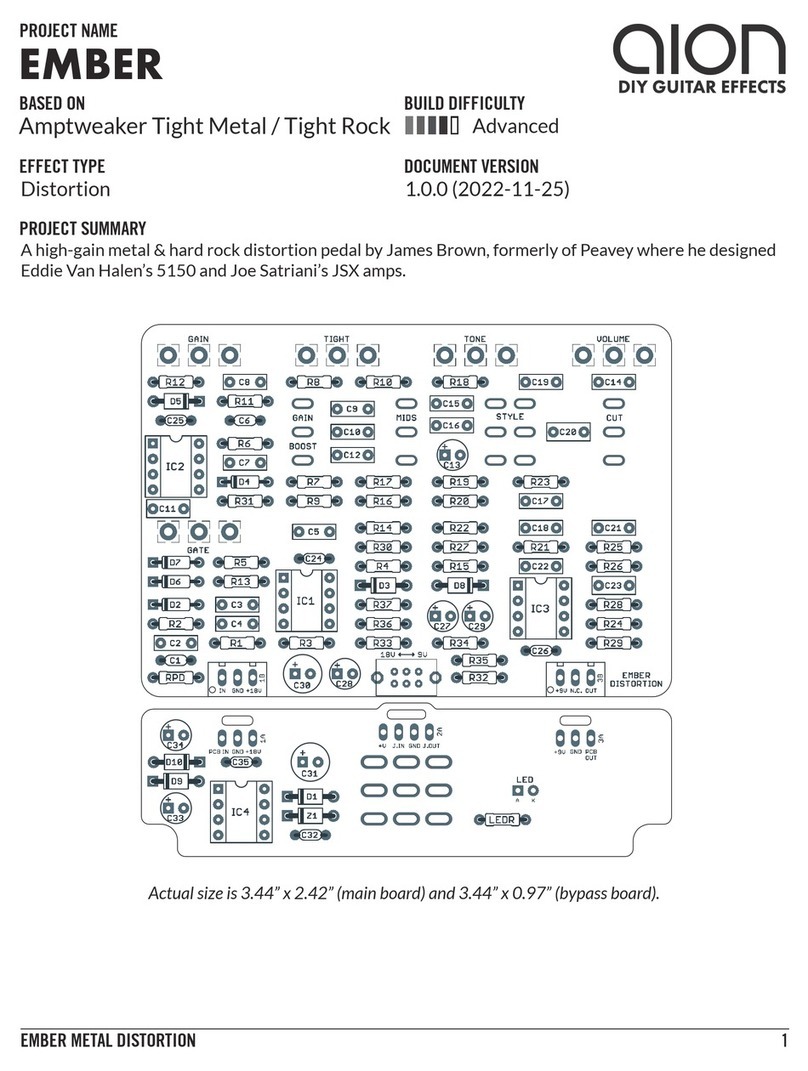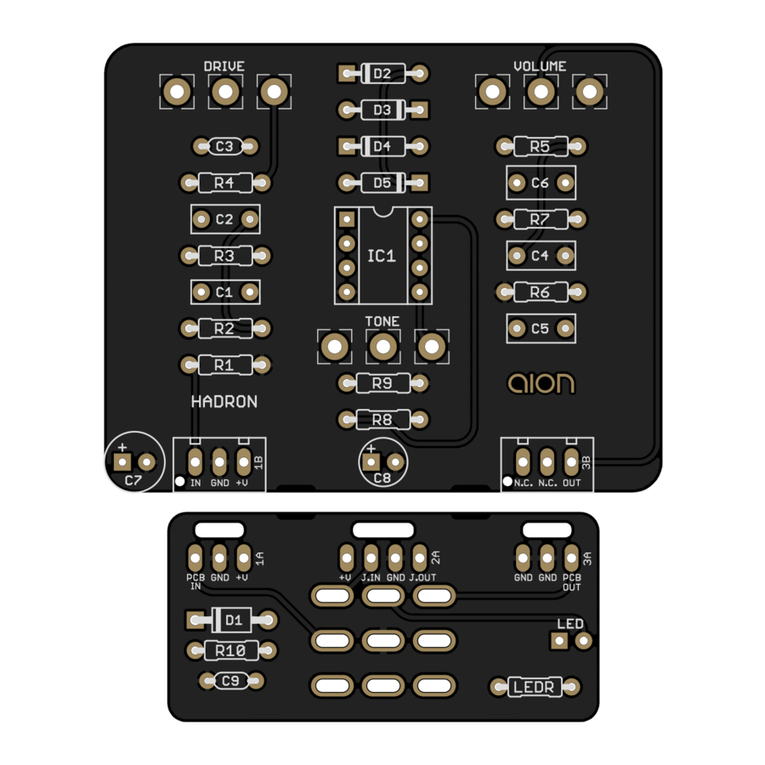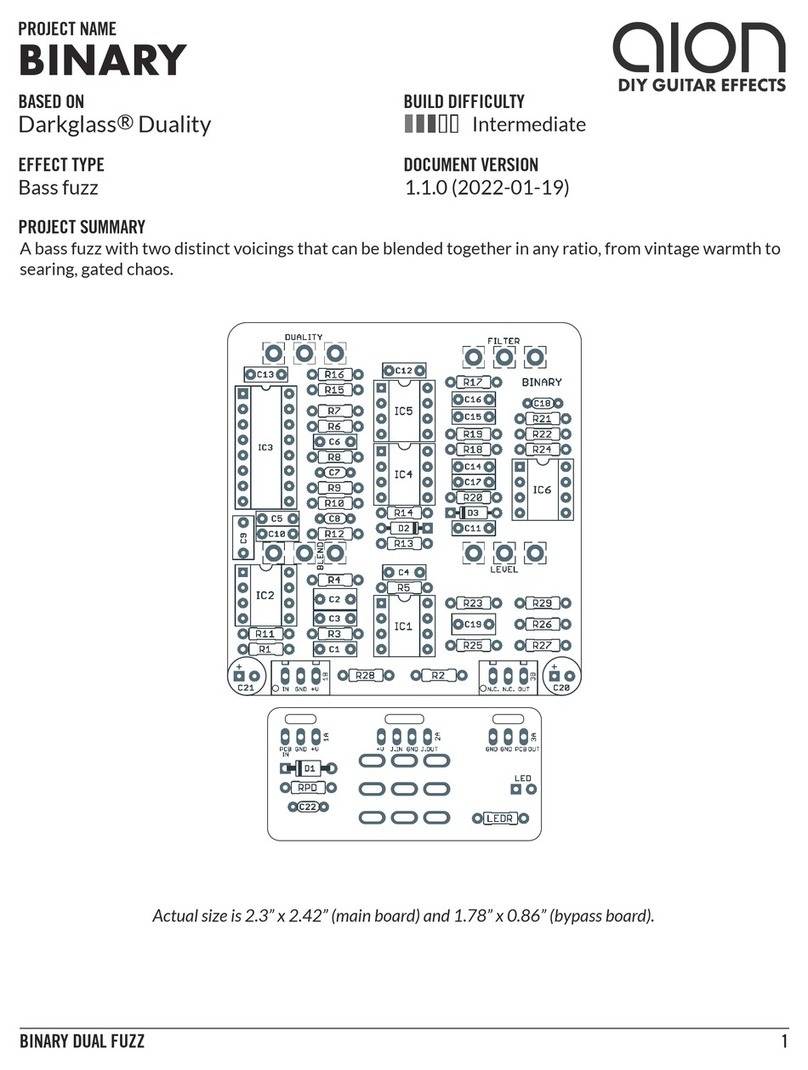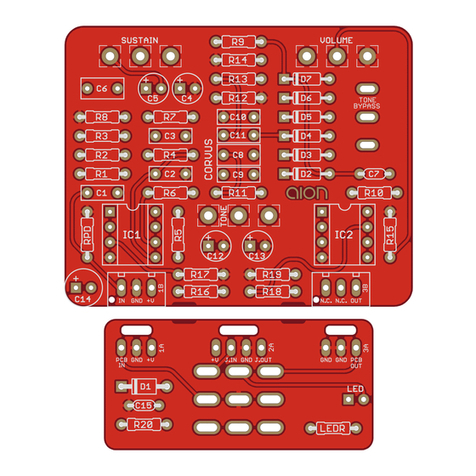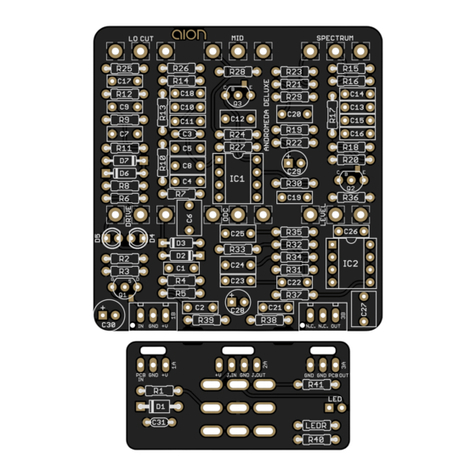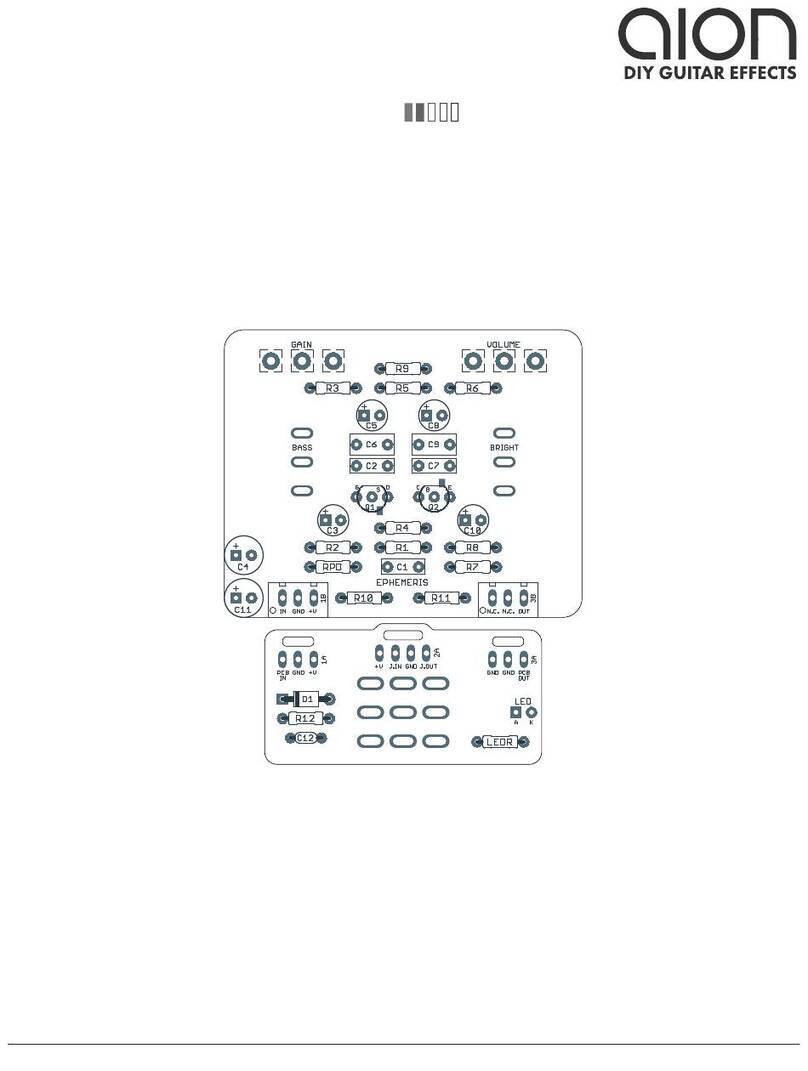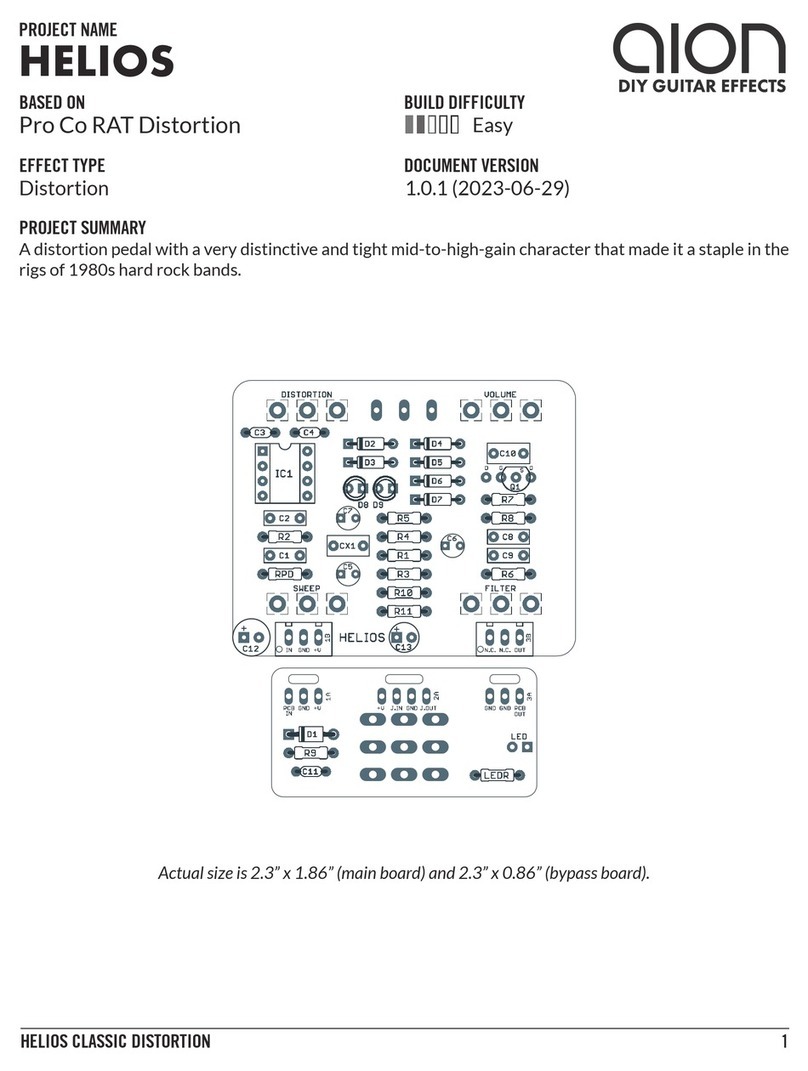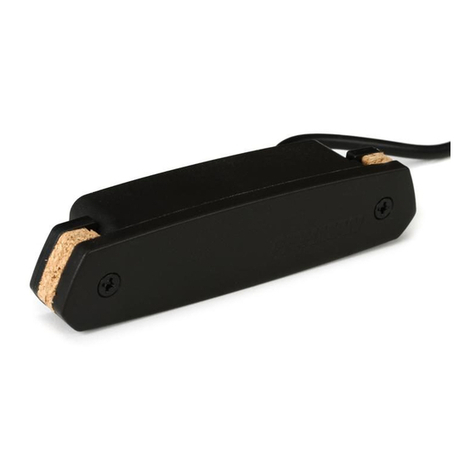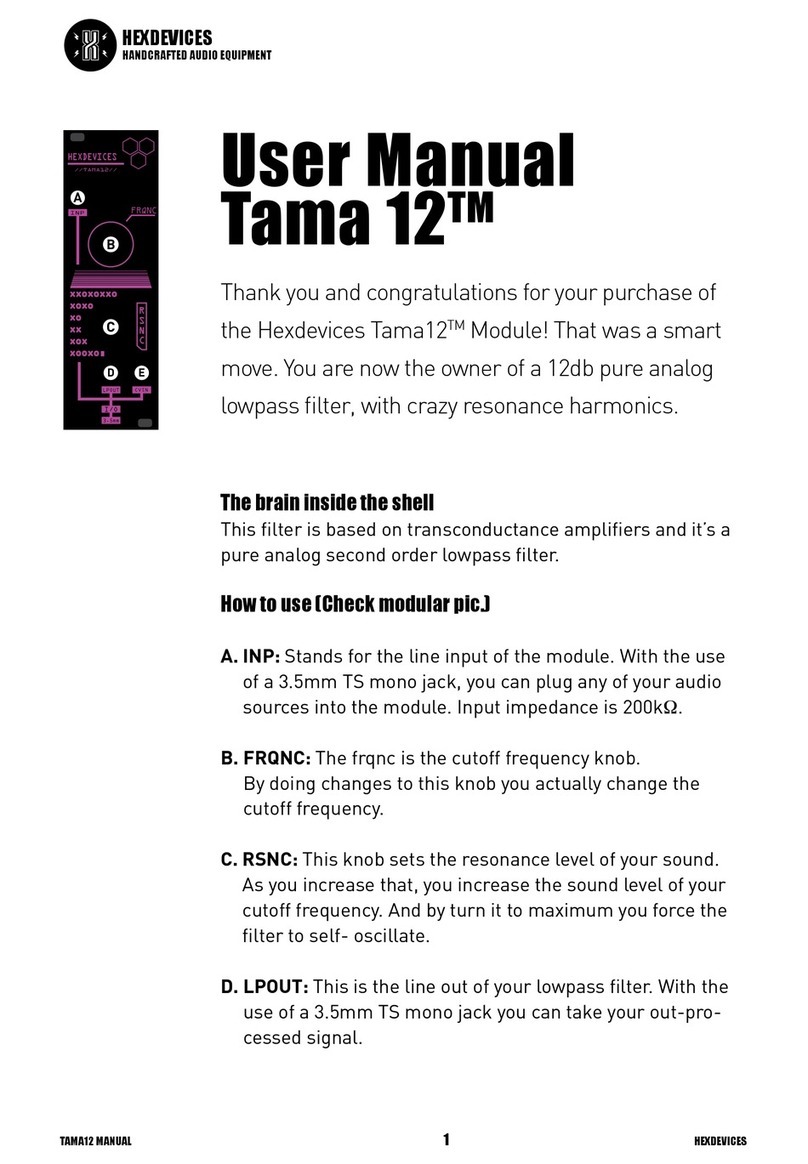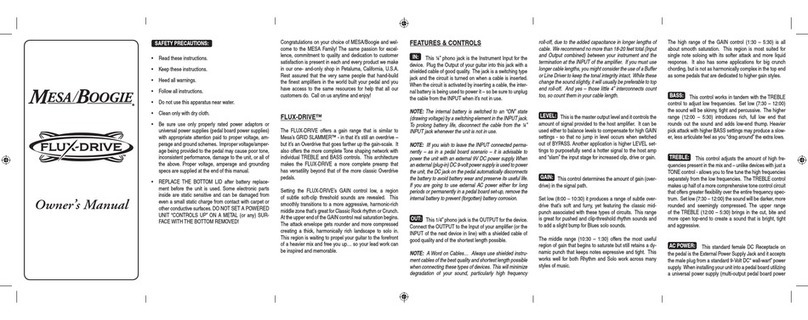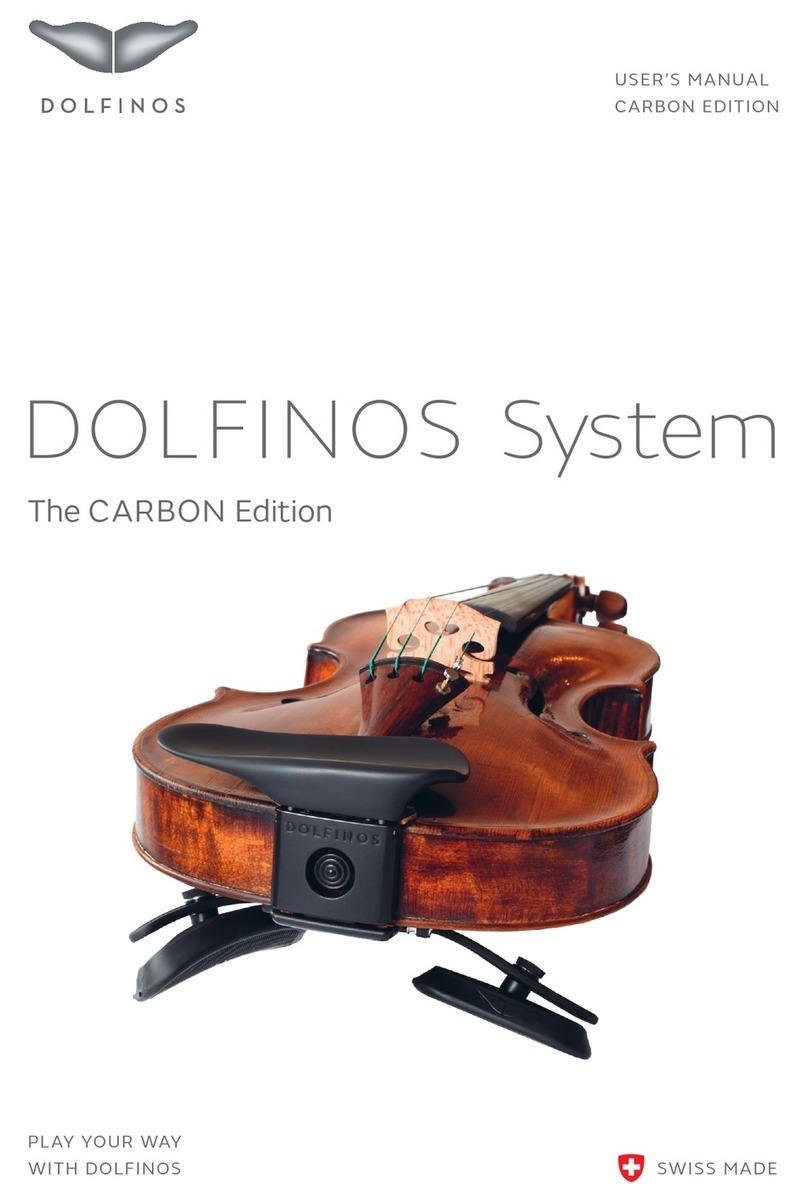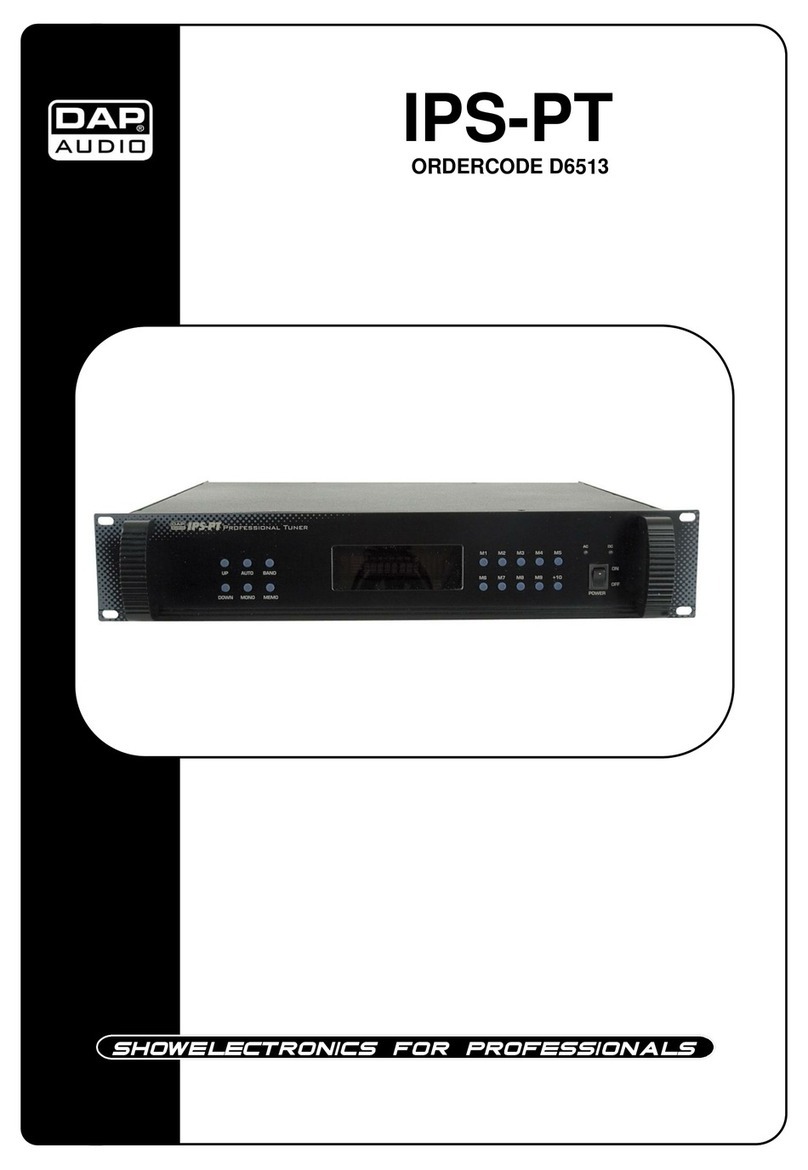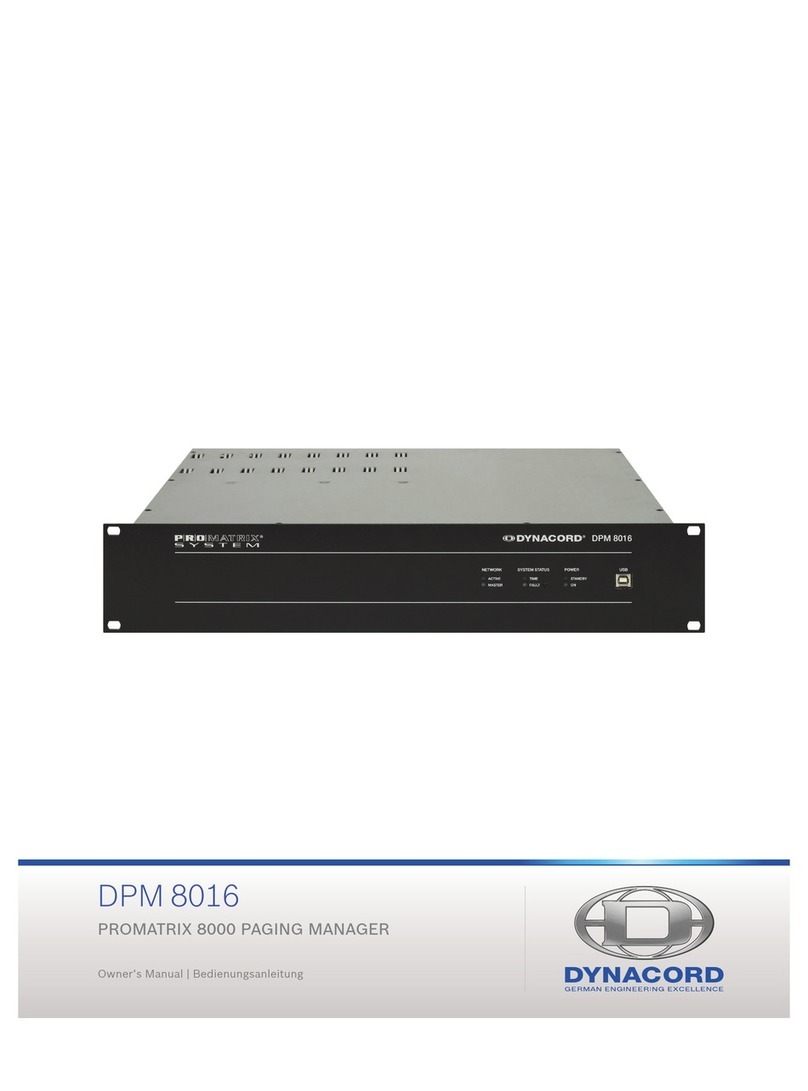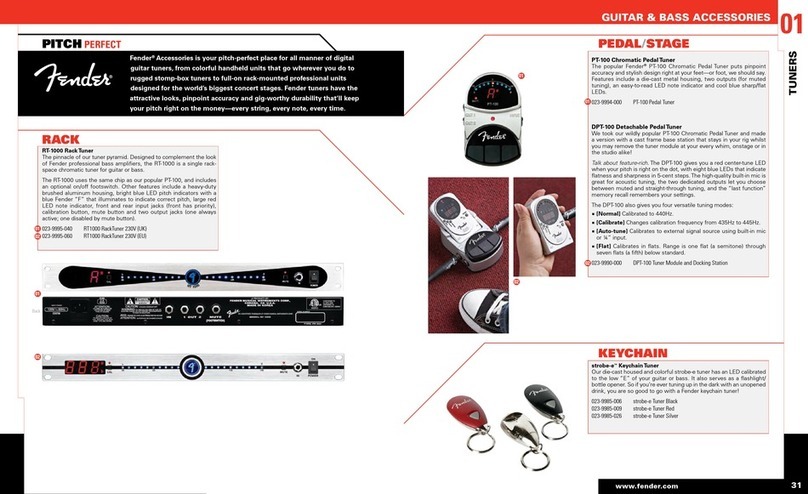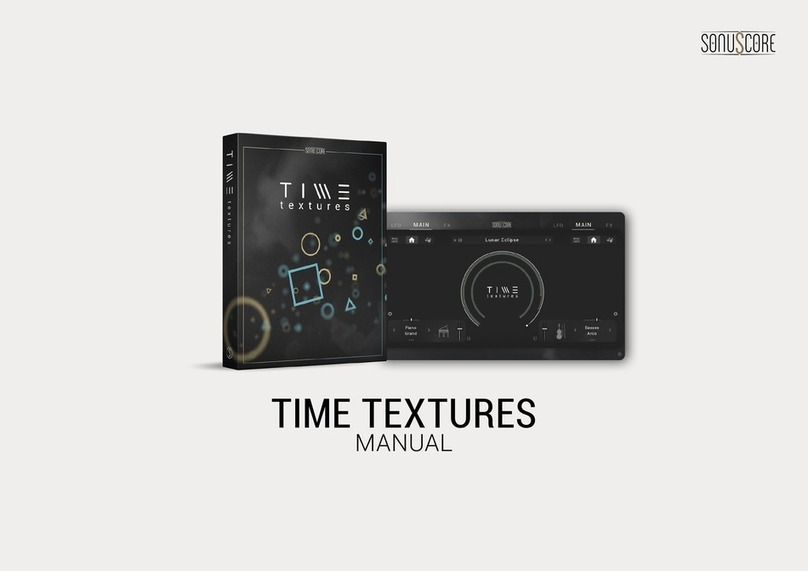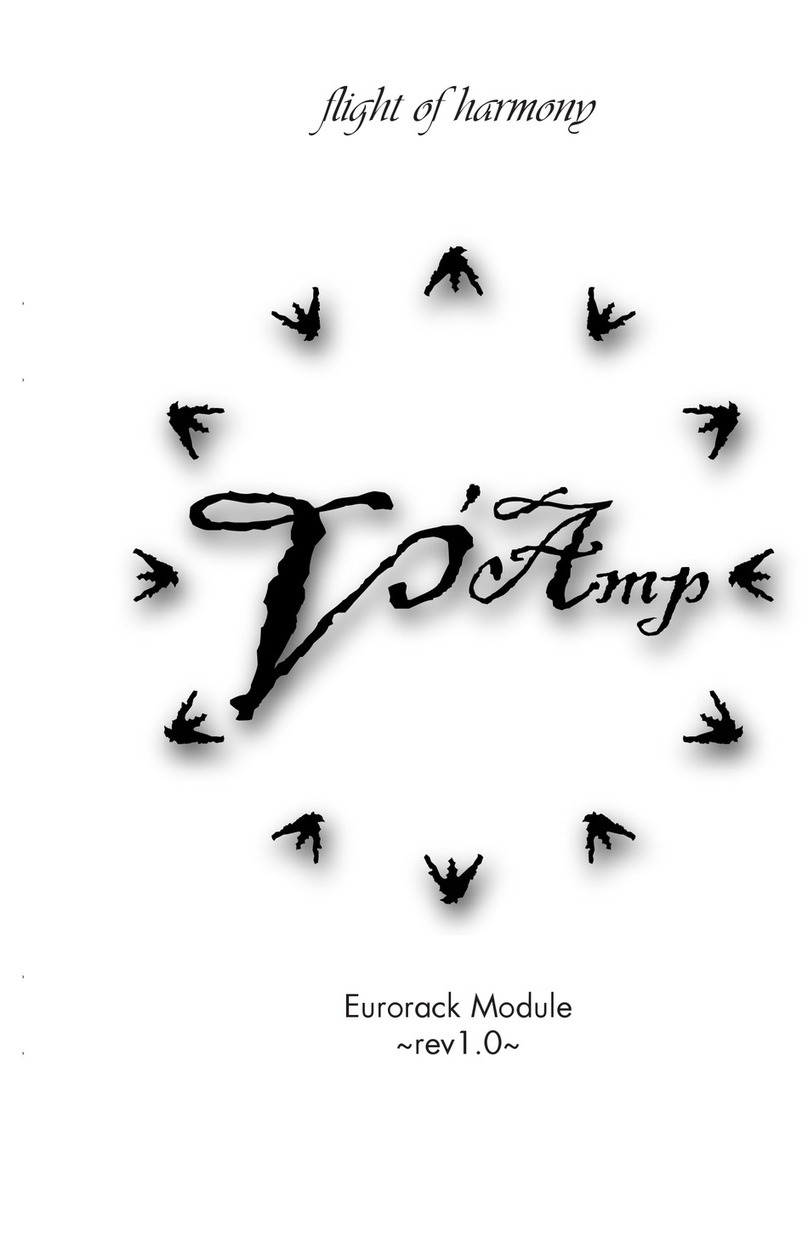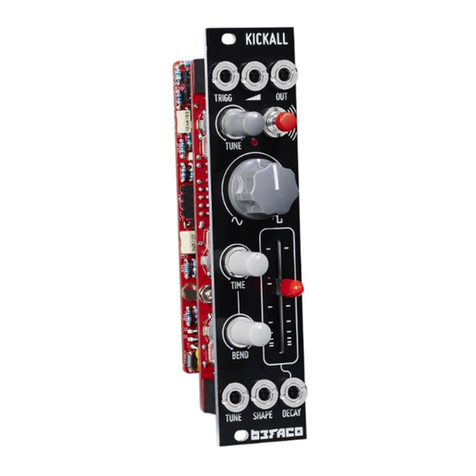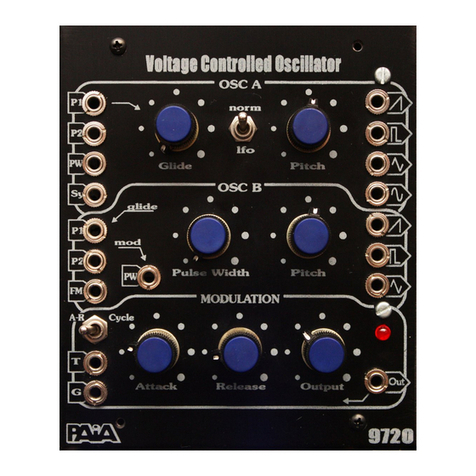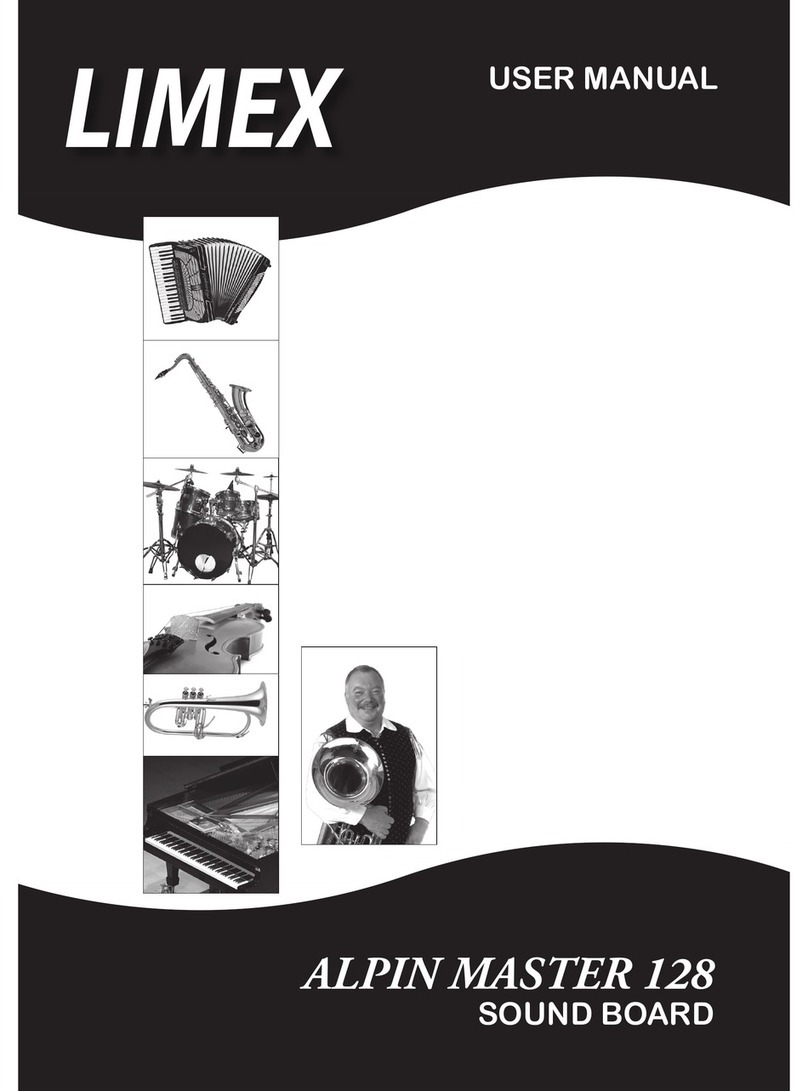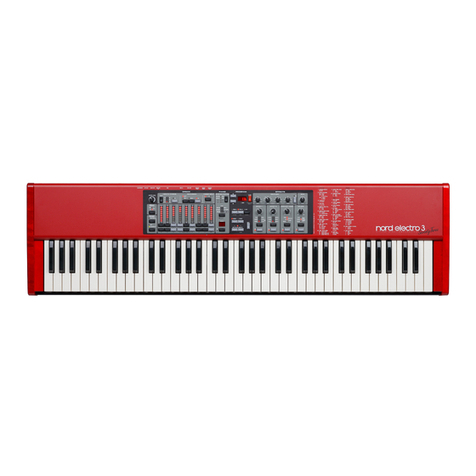
CINDER HYBRID FUZZ 4
PARTS LIST, CONT.
PART VALUE TYPE NOTES
C3 100n Film capacitor, 7.2 x 2.5mm
C4 100n Film capacitor, 7.2 x 2.5mm
C5 22uF Electrolytic capacitor, 5mm
C6 1n2 Film capacitor, 7.2 x 2.5mm
C7 4.7uF Electrolytic capacitor, 4mm
C8 22uF Electrolytic capacitor, 5mm
C9 100n Film capacitor, 7.2 x 2.5mm
C10 47pF MLCC capacitor, NP0/C0G
C11 47n Film capacitor, 7.2 x 2.5mm
C12 22uF Electrolytic capacitor, 5mm
C13 100n Film capacitor, 7.2 x 2.5mm
C14 33n Film capacitor, 7.2 x 2.5mm
C15 47n Film capacitor, 7.2 x 2.5mm
C16 220n Film capacitor, 7.2 x 2.5mm
C17 1n2 Film capacitor, 7.2 x 2.5mm
C18 100n Film capacitor, 7.2 x 2.5mm
C19 220n Film capacitor, 7.2 x 2.5mm
C20 47uF Electrolytic capacitor, 5mm Reference voltage filter capacitor.
C21 100uF Electrolytic capacitor, 6.3mm Power supply filter capacitor.
C22 100n MLCC capacitor, X7R Power supply filter capacitor.
D1 1N5817 Schottky diode, DO-41
D2 1N914 Fast-switching diode, DO-35
Q1 2N5088 BJT transistor, NPN, TO-92
Q2 2N5088 BJT transistor, NPN, TO-92
Q3 AC127 Germanium transistor, NPN Any NPN above 80-100 hFE will work, i.e. 2N1304 from SBE.
IC1 TL072 Operational amplifier, dual, DIP8
IC1-S DIP-8 socket IC socket, DIP-8
IC2 TL072 Operational amplifier, dual, DIP8
IC2-S DIP-8 socket IC socket, DIP-8
TIGHT 100kC 16mm right-angle PCB mount pot Reverse audio (reverse log or antilog) taper.
FUZZ 10kC dual 16mm right-angle PCB mount pot, dual Reverse audio (reverse log or antilog) taper, dual-ganged.
TONE 10kB 16mm right-angle PCB mount pot Linear taper.
VOLUME 100kA 16mm right-angle PCB mount pot Audio (log) taper.
EDGE SPDT on-on Toggle switch, SPDT on-on
TRANS. DPDT on-on Toggle switch, DPDT on-on
TONE SW. DPDT on-on Toggle switch, DPDT on-on
LED 5mm LED, 5mm, red diffused
